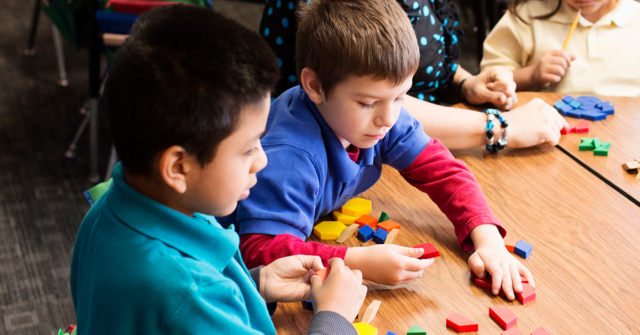
Homework. The word alone evokes strong emotions from children, youth, parents, and teachers. For most teachers, this word sits right between rock and hard place. Assign too much homework, and teachers run the risk of complaints, if not outright misery, from parents, students, and—feeling the need to give feedback on all that homework—themselves. Assign too little homework, and teachers risk being seen as “soft” and lacking in rigor, and because homework can feel like it helps “cover” the curriculum, feeling further behind. And that just regards the issue of how much homework. Then there are all the complexities around what kinds of homework.
Advocates for the reduction or elimination of homework have raised substantive concerns about the quality of homework assignments, as well as the stress it imposes on children and their families, the ways in which it can interfere with family time and extracurricular activities, and the inherent inequity of assigning homework to children who may not have access to help at home (Kohn 2006; Kralovec and Buell 1991).
There is no doubt that quality of homework matters. Many teachers assign homework with the belief that students need practice persevering through tasks they do not enjoy. They see this as key to developing self-regulated strategies. However, self regulation without engagement does not guarantee learning, and partly because of this homework is associated with blind compliance in meaningless tasks. But where to start with reimagining what homework can be?
Research shows us the qualities of helpful homework:
- Competence Through Focused Tasks and Timely Feedback: Homework should have a clear purpose that is communicated through a method that fosters understanding and meaning.
- Authentic Purpose and Relevance: The quality of homework matters. Homework designed on the bases of the best practice is developmentally appropriate and engages students in their own contexts. Homework assignments, scholars argue, stand to be most genuine when they ask students to solve real, relevant problems.(Newman 1996, in Alleman et al. 2010)
- Autonomy: Homework should foster a sense of ownership. Students are more likely to feel engaged when reading and to read for longer periods when they are given the choice of what to read (Schiefele et al. 2012; Wigfield, Gladstone, and Turci 2016)
But what should homework assignments look like in order for children to be motivated and engaged; have agency to initiate, strategize, and problem solve; enthusiasticly challenge students; offer real-life transfer of schoolwork; be inherently differentiated for the different abilities and interests and ages; and with feedback that is immediate, task-based, and results in actual improvement?
To accomplish this, homework must acknowledge, honor, and use the power generated when children discover and engage in their own passions, activities, and hobbies rather than assign tasks that are removed from children’s experiences and decontextualized from their lives. What if homework were assigned that can morph in ways that meet the wide variety of family cultures, expectations, and time constraints? What if there were a balance of days when children do not have any homework (aside from expectations that they are reading at home!) and days when they bring work home from school because it’s necessary, not simply because it’s a habit of our profession? What if it were taken into consideration that, just like adults who put in a full day of work, elementary school-aged children, too, need downtime and time for self-driven pursuits after a full day of school (Coppola 2015)?
♦ ♦ ♦
To find out more about what effective homework looks like, with research-based practical strategies for authentic learning at home, check out No More Mindless Homework by Kathy Collins and Janine Bempechat. You can download a sample chapter here.
♦ ♦ ♦
 Kathy Collins is coauthor with Matt Glover of the Heinemann title I Am Reading. Kathy is the beloved author of Growing Readers as well as Reading for Real. She presents at conferences and works in schools all over the world to support teachers in developing high-quality, effective literacy instruction in the elementary school grades. Kathy has worked closely with the Teachers College Reading and Writing Project at Columbia University, and she was a first grade teacher in Brooklyn, New York.
Kathy Collins is coauthor with Matt Glover of the Heinemann title I Am Reading. Kathy is the beloved author of Growing Readers as well as Reading for Real. She presents at conferences and works in schools all over the world to support teachers in developing high-quality, effective literacy instruction in the elementary school grades. Kathy has worked closely with the Teachers College Reading and Writing Project at Columbia University, and she was a first grade teacher in Brooklyn, New York.
 Dr. Janine Bempechat is Professor in the Department of Psychology and Human Development at Wheelock College. Her research has been published in leading journals and supported by the Spender Foundation and the W.T. Grant Foundation. She is co-editor, with David S. Shernoff, of the NSSE Yearbook, Engaging Youth in Schools: Empirically-Based Models to Guide Future Innovations.
Dr. Janine Bempechat is Professor in the Department of Psychology and Human Development at Wheelock College. Her research has been published in leading journals and supported by the Spender Foundation and the W.T. Grant Foundation. She is co-editor, with David S. Shernoff, of the NSSE Yearbook, Engaging Youth in Schools: Empirically-Based Models to Guide Future Innovations.
References:
Alleman, J., J. Brophy, B. Knighton, R. Ley, B. Botwinski, and S. Middlestead. 2010. Homework Done Right: Powerful Learning in Real-Life Situations. New York: Corwin.
Coppola, S. 2015. “Four Stories That Homework Tells Children About School Learning, & Life.” My So-called Literacy Life, December 31. https://mysocalled literacylife.com/2015/12/31/four-stories-that-homework-tells-children-about -school-learning-life/.
Kohn, A. 2006. The Homework Myth: Why Our Kids Get Too Much of a Bad Thing. Cambridge, MA: Da Capo Lifelong Books.
Kralovec, E., and J. Buell. 2001. “End Homework Now.” Educational Leadership (April): 39–42.
Schiefele, U., E. Schaffner, J. Möller, and A. Wigfield. 2012. “Dimensions of Reading Motivation and Their Relation to Reading Behavior and Competence.” Reading Research Quarterly 47 (4): 427–63. doi:10.1002/rrq.030.
Wigfield, A., J. Gladstone, and L. Turci. 2016. “Beyond Cognition: Reading Motivation and Reading Comprehension.” Child Development Perspectives 10 (3): 190–95. http://doi.org/10.1111/cdep.12184



